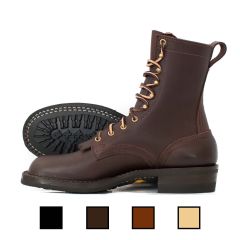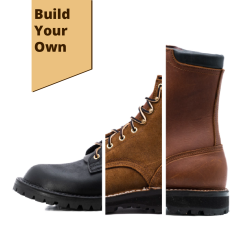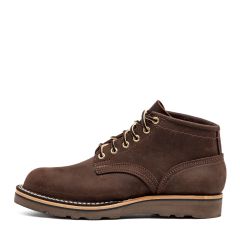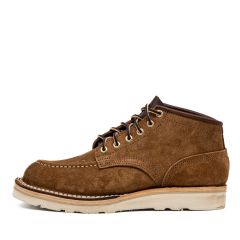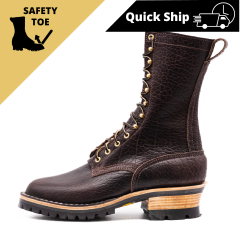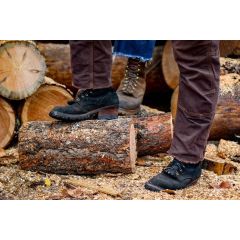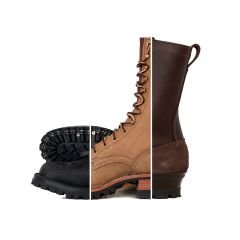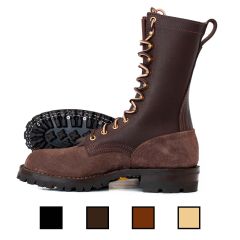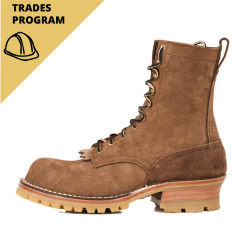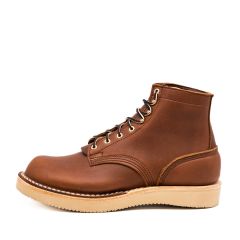Best Waterproof Work Boots
In this guide, we delve into what makes the best waterproof work boots stand out, focusing on their durability, waterproofing technology, and comfort. Whether you're a seasoned professional or just starting in a field that demands robust footwear, understanding these aspects will help you make an informed choice, ensuring that your boots carry you through your tasks with ease and protection.
The Importance Of Durability In Work Boots
Durability is a cornerstone of quality work boots. It's not just about the lifespan of the footwear but also about providing consistent protection and support over time. A durable work boot withstands the rigorous demands of daily wear and tear, resisting damage from exposure to harsh conditions, abrasive surfaces, and heavy impacts. Key components that contribute to durability include:
- Material Quality: High-grade leather or synthetic materials offer resilience against the elements, ensuring the boots do not easily crack, split, or degrade.
- Construction Method: Techniques like Goodyear Welt or cement construction determine how the boot's sole is attached to the upper. These methods ensure a bond that holds up against extensive use.
- Reinforced Toe and Heel Areas: These zones are prone to the most wear. Reinforcements, such as steel or composite materials, protect against impacts and provide additional durability.
- Outsole Material: Rubber outsoles with deep lugs offer traction and wear resistance, essential for longevity in various terrains.
Investing in a pair of durable work boots means fewer replacements, better protection, and ultimately, more value for your money. It ensures that the boots will serve their purpose of keeping you safe and comfortable, regardless of the conditions you face daily.
Understanding Waterproofing Technology
The core feature distinguishing waterproof work boots from standard ones is their ability to keep feet dry in wet conditions, a crucial factor for comfort and foot health. Waterproofing technology in work boots involves several components working together:
Waterproof Membranes
The most common technology used in waterproof boots. Brands may use proprietary membranes like Gore-Tex or their own versions. These membranes allow moisture from sweat to escape while preventing water from entering, ensuring breathability along with waterproofing.
Sealed Seams
For a boot to be fully waterproof, all seams and junctions where materials meet must be sealed. Manufacturers often use waterproof tape or sealant to cover seams, ensuring no water can penetrate through stitching.
Water-Repellent Coatings
Applied to the exterior of the boot, these coatings help water bead off the surface rather than soaking into the material. While not solely responsible for waterproofing, they add an extra layer of protection.
Integrated Gaiters and Waterproof Gussets
Some boots include design features like gaiters (to cover the gap between the boot and leg) and waterproof gussets (in the tongue area) to prevent water from entering at the openings.
Comfort: A Key Factor in Choosing Work Boots
While durability and waterproofing are crucial for the longevity and effectiveness of work boots, comfort is equally important, especially for those spending long hours on their feet. Comfort in waterproof work boots is influenced by several design features:
Ergonomic Fit
A boot that fits well will prevent discomfort and foot fatigue. It's important to choose boots that match your foot's shape, offering enough room in the toe box and a snug fit around the heel and midfoot.
Cushioning and Support
Quality insoles and midsoles play a significant role in comfort. Look for boots with adequate cushioning that can absorb shock and reduce stress on your feet and joints. Supportive features like arch support help distribute weight evenly.
Breathable Materials
Even with waterproofing, boots need to allow for air circulation to prevent sweat buildup inside. Materials that wick moisture away from the foot and breathable waterproof membranes contribute to a more comfortable wearing experience.
Flexible Construction
Boots that allow for natural foot movement will be more comfortable throughout a long day. Flexibility in the sole and upper material can prevent chafing and stiffness, adapting to your foot's movements.
Nicks Boots Best Waterproof Work Boots
HardwearPro - Classic Configuration
HardwearPro - Classic Configuration - This model offers high flexibility and water resistance, ideal for challenging environments. Crafted with quality leather, it's built for durability and adaptability across various conditions, ensuring a secure and comfortable fit.
HardwearPro - EH Rated
HardwearPro - EH Rated - Designed for tradespeople, this version combines robustness with electrical hazard protection, focusing on water resistance and long-wearing comfort. It's made to support the rigorous demands of carpentry, electrical work, and plumbing, with materials that resist water ingress.
HardwearPro
HardwearPro - Features high water resistance and flexibility, making it suitable for a range of outdoor activities. The construction emphasizes durability, secure fitting, and water-resistant properties, ensuring it stands up to demanding use.
Insulated Ridgeline Hiking Boot
Insulated Ridgeline Hiking Boot - This boot is specifically designed for outdoor enthusiasts, offering insulation and high water resistance. It's tailored for comfort and durability in harsh terrains, with customization options to meet individual needs and preferences.
Marshal Duty Boot - Classic Config
Marshal Duty Boot - Classic Config - A tactical boot focused on extended wear and water resistance. With a padded collar and durable design, it provides comfort and protection for duty-related activities, ensuring readiness in various conditions.
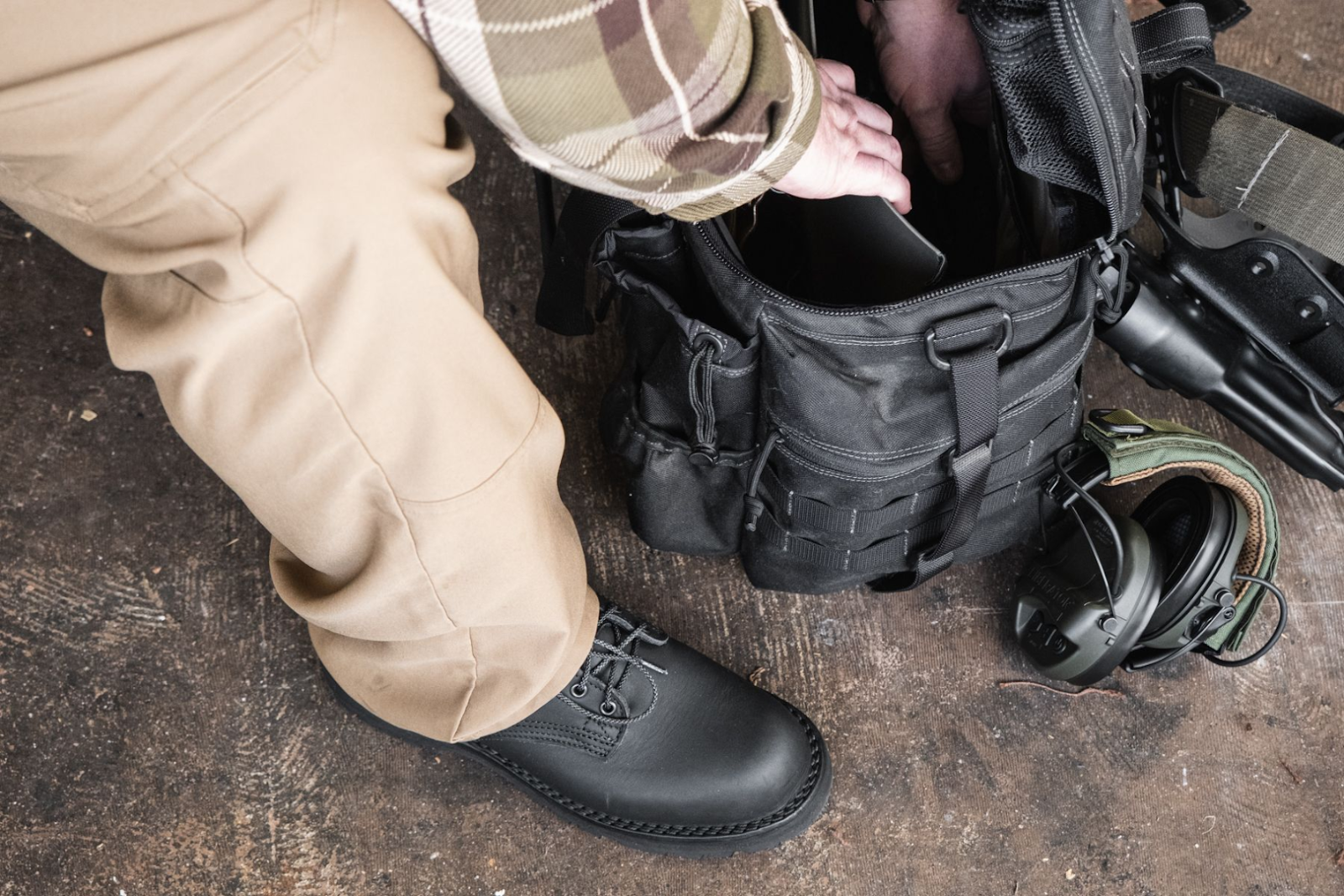
Ridgeline Hiking Boot - Custom Configuration
Ridgeline Hiking Boot - Custom Configuration - Allows for comprehensive customization, focusing on water resistance and durability for hiking. It's designed to offer comfort, support, and protection across different terrains, enhancing the outdoor experience.
WaterWork® - Insulated
WaterWork® - Insulated - Built for all-season use with a special emphasis on water resistance. The boot incorporates innovative construction and treated leather for maximum flexibility and water protection, ideal for environments requiring superior water resistance.
WaterWork® Safety Toe - Classic Configuration
WaterWork® Safety Toe - Classic Configuration - Merges water resistance with workplace safety through its steel or composite toe options. It's designed for protective durability in water-intensive environments, ensuring both safety and comfort for the wearer.
How To Care For Your Waterproof Work Boots
Maintaining your waterproof work boots is key to extending their lifespan and ensuring they continue to provide the level of protection and comfort you need. Proper care involves several straightforward steps:
Cleaning
After each use, especially if you've been in mud or dirty water, clean your boots with a soft brush and mild soap. Avoid harsh chemicals that can damage the waterproof coating or the boot material.
Drying
Never force dry your boots by placing them near direct heat sources like radiators or fires. High heat can damage the leather and the waterproof membrane. Instead, let them air dry naturally at room temperature. You can stuff them with newspaper to help absorb moisture from the inside.
Conditioning
Leather boots benefit from occasional conditioning to prevent the leather from drying out and cracking. Use a conditioner suitable for waterproof leather to keep the material supple without compromising its water-resistance.
Waterproofing Treatment
Over time, the waterproof coating may wear off. Applying a waterproofing spray or wax can help restore water resistance. Make sure the product is compatible with your boots' material and does not block the pores, ensuring the material remains breathable.
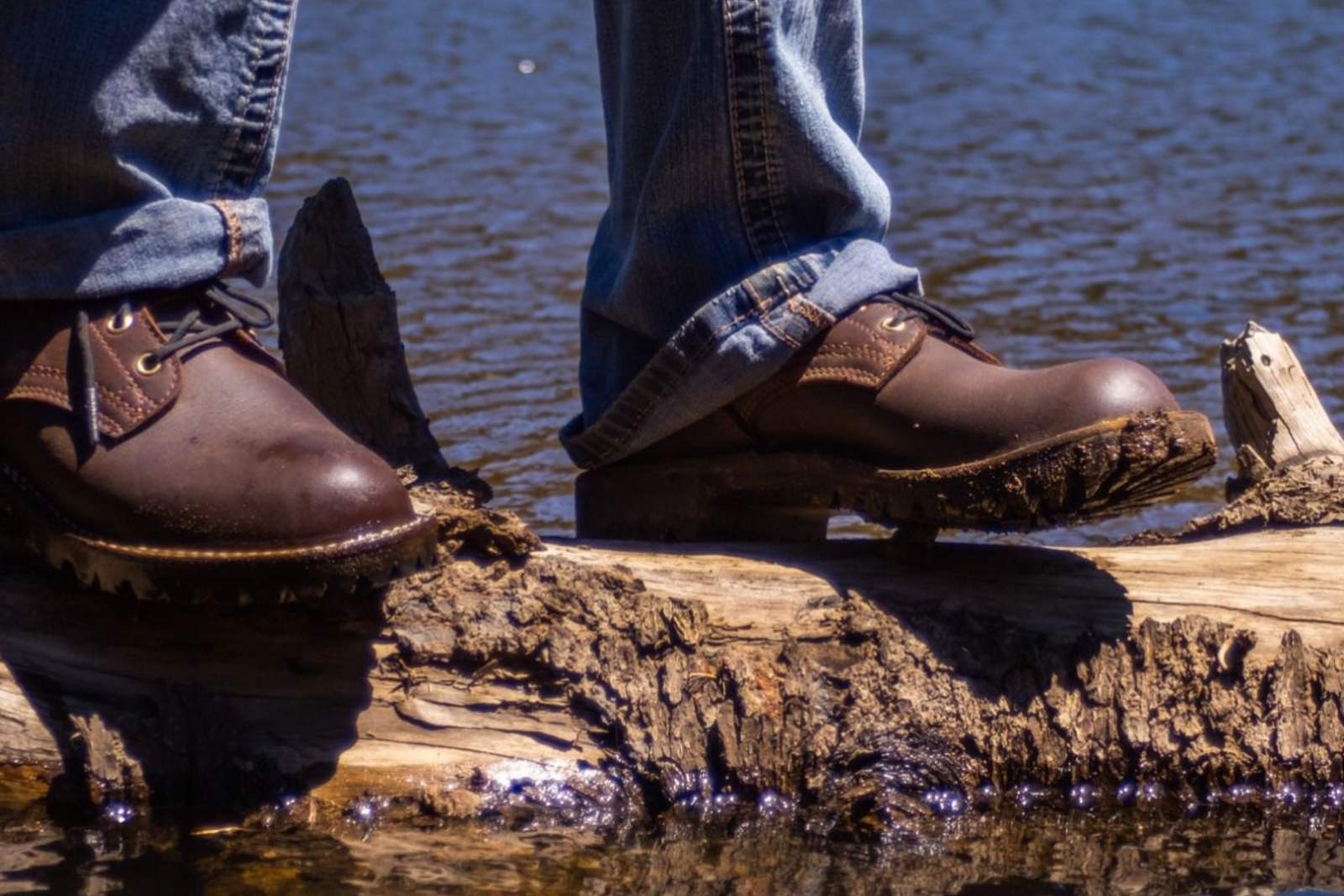
Storage
Store your boots in a cool, dry place away from direct sunlight. If you won’t be using them for an extended period, cleaning and conditioning them before storage is advisable to prevent the material from degrading.
Final Thoughts
Choosing the right waterproof work boots is crucial for those working in wet conditions, as the ideal pair should be durable, have advanced waterproofing to keep your feet dry, and be comfortable for long hours. Understanding the technology behind waterproofing helps ensure you pick boots that offer safety, efficiency, and comfort. Investing in a high-quality pair is beneficial for your immediate needs and long-term foot health. Proper care of your boots will make them last longer and perform better. It's important to consider your job's specific demands and environments, as the best boots are those that provide a mix of protection, durability, and comfort suited to your daily tasks.
Frequently Asked Questions
Can waterproof work boots also be breathable, or does waterproofing compromise breathability?
Yes, waterproof work boots can also be breathable. Modern waterproofing technologies, such as Gore-Tex membranes, are designed to prevent water from entering while allowing moisture (sweat) from inside the boot to escape, ensuring breathability.
Are there waterproof work boots suitable for extreme temperatures?
Absolutely. Many waterproof work boots are designed with insulation for cold environments or lightweight materials for hot climates, ensuring comfort in extreme temperatures while maintaining waterproof properties.
How long can I expect my waterproof work boots to stay waterproof?
The longevity of the waterproofing depends on the usage frequency, conditions, and care of the boots. With proper maintenance, the waterproofing can last the lifetime of the boots, although re-application of waterproofing treatments may be necessary over time.
Can I use regular shoe polish on my waterproof leather work boots?
It's advisable to use products specifically designed for waterproof leather. Regular shoe polish might not provide the necessary protection and could potentially harm the boot's waterproofing capabilities.
Are steel toe work boots also available with waterproof features?
Yes, many waterproof work boots come with steel toe options, offering both protection against impact and water resistance.
What’s the difference between water-resistant and waterproof work boots?
Water-resistant boots can handle light moisture and brief encounters with water, while waterproof boots are designed to keep your feet dry in wet conditions for extended periods.
Do waterproof work boots require special socks?
While special socks aren't required, moisture-wicking or wool socks can enhance comfort and breathability, complementing the boot's waterproof features.
Is it possible to repair waterproof work boots if they start leaking?
It depends on the source of the leak. Some issues, like separated soles or damaged membranes, might be repairable by a professional. However, extensive damage often requires replacement.
Are there any eco-friendly waterproof work boots?
Yes, some brands focus on sustainability, offering waterproof work boots made from recycled materials and employing eco-conscious production practices.
Can I use waterproof work boots for hiking?
While some waterproof work boots are versatile enough for hiking, it's important to choose a pair that offers the right balance of protection, support, and flexibility for the trail's demands.
